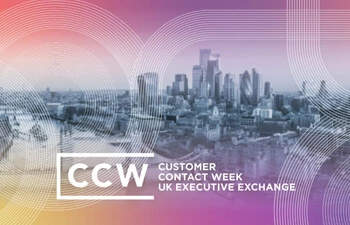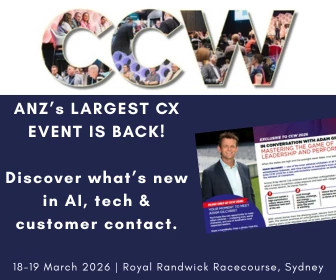12 things your next CX strategy needs to cover
As we take stock of 2025 and plan for what’s ahead, our expert panel of CX specialists suggest 12 things CX practitioners need to keep in mind for their next strategy
Add bookmark
Over the last month, CX Network has brought you the scoop on the big trends that are set to be top of mind in 2026, 10 ways generative and agentic AI will change how we work, and how to avoid the hype to deliver real-world results.
To round it all off, we now have 12 tips for your next CX strategy, based on insights from Walmart Canada, Bank al Etihad, Coles, Thunes, Commonwealth Bank Australia, Twilio, CSG, Epsilon, Cigna Healthcare, and more.
Naturally, there’s a heavy focus on artificial intelligence (AI), but with emphasis on the cultural and human angles. As Babul Balakrishnan, head of CX for Thunes told us, AI is not here to steal jobs, “it’s here to expose teams still wrestling with Excel formulas from 1998”.
“AI won’t replace your people – but people using AI will definitely replace the ones who don’t. Let the machines handle the mundane, so humans can finally focus on doing meaningful work,” he says.
However, there’s also a realization that the AI age is changing what CX means. In response, practitioners need to shift their thinking and, crucially, upskill, particularly around data fluency, AI and leadership, they must understand how gamification is driving retention, and take a fresh approach to customer listening.

Don't miss any news, updates or insider tips from CX Network by getting them delivered to your inbox. Sign up to our newsletter and join our community of experts.
1. Master the fundamentals
In a world where experience is driven by AI and automation, it’s imperative that practitioners have the basics covered before running with a high-tech deployment.
Ledi Lapaj, director of customer experience at Bank al Etihad, says that to remain competitive in 2026, this means CX strategies “must blend human empathy with intelligent automation, data accuracy, and ethical governance”.
“The priority is to keep CX human-centered rather than technology-driven, avoiding the trap of building impressive tech that solves the wrong problems or overlooks employee realities,” she explains.
“Before implementing any automation, organizations must master the fundamentals – ensuring data quality, readiness, and transparency. Data ethics and employee enablement will stand as non-negotiable pillars of sustainable CX excellence,” Lapaj adds.
Ultimately, she says that embracing adaptability, where systems and people continuously learn and evolve, “will define the next era of customer experience leadership”.
2. Connect customer truth with business performance
Practitioners should also shift their mindset to ensure CX is the glue that holds each part of the business together.
Montserrat Padierna, customer insights and analytics lead at Walmart Canada, says: “In 2026, CX must be fully attuned to the organization’s overall strategy and ambition, not a parallel effort, but the operating system that connects customer truth with business performance.”
To achieve this, Padierna says CX must “evolve into a living experience management system”, capable of informing the business both descriptively – in terms of what’s happening – and predictively – in terms of what will happen next.
“AI can sustain that intelligence consistently, identifying patterns and opportunities in real time,” she says.
Yet its value depends on human experts, who Padierna refers to as the Weavers, to ensure that insights are “tailored to business goals, tied to operational KPIs, and transformed into action”.
“The future of CX belongs to organizations where AI delivers precision, and humans deliver purpose,” she says.
3. Anchor your plans in retention, journey orchestration and consistent execution
With these basics covered, CX and loyalty expert Dominik Olejko says that one major shift occurring in CX at present is changing how loyalty is created.
“Customer experience in 2026 moves from isolated touchpoints to connected experience flows that shape behavior and real commercial outcomes. As AI evolves from automation to intent prediction, those flows become faster, simpler, and more contextual, setting a new baseline for what customers expect,” he says. “Because people are increasingly overloaded, the brands that stand out are the ones that actively reduce effort and remove unnecessary decisions across the journey.”
As a result, customer loyalty will become the “natural result of returning driven by clarity, trust, and tangible experience value”.
“It all leads to a strategy anchored in retention, journey orchestration and consistent execution across channels, where every improvement delivers measurable business impact.”
In the end, Olejko says, the brands that will win in 2026 are not the ones with the most channels or the most tech, “but those that read intent early, eliminate friction and turn each interaction into a reason to come back”.
4. Your north star is effortless and economically sustainable CX
Echoing Olejko’s comments regarding isolated touchpoints, Nick Glimsdahl, CX expert and host of the podcast Press 1 For Nick, says that CX must also include “the full ecosystem” of employees, partners, and intelligent systems.
“The line between operations and experience is disappearing, making collaboration and data fluency critical leadership skills. Successful companies will embrace continuous improvement loops powered by analytics and human insight,” he says.
This means the “north star remains unchanged” for practitioners. “Create experiences that are effortless and economically sustainable”.
“The future of CX isn’t just smarter, it’s more intentional, balanced, and human by design,” Glimsdahl says.
Claire Cunningham, senior manager of Voice of Customer in Customer Insights and Planning for Coles, agrees.
“The very best CX strategies embrace curiosity and solution-finding above all else. If your north star is making it as easy as possible to be your customer, you can’t go wrong,” she says.
In practice, however, this is easier said than done. As Cunningham explains – and as many are already aware – raising customer pain points and changing trends to CX or VoC teams doesn’t always receive the reception needed to drive change.
But that doesn’t mean customers should have to put up with broken customer journeys or outdated experiences, “especially if it’s a barrier to purchasing,” Cunningham adds.
Instead, everybody needs to be aligned to make it easy to be your customer. “Curiosity keeps strategies from becoming stuck and allows for continuous sales growth if you work to understand what your customers want and need,” she advises.
5. Context is the real currency
Organizations have been introducing more personalized experiences for years, with the brave embracing the latest buzz word, hyper-personalization. However, according to Babul Balakrishnan, head of CX for Thunes, hyper-personalization is old news. “Context is the real currency,” he says.
“Customers don’t care how well you know their first name. They care if you know why they’re irritated, what they’re trying to do, and how fast you can make that problem disappear,” he adds.
6. Ensure all decisions enhance value and trust
In an age of flash and distraction, it’s easy to forget the people at the receiving end of an experience, but in addition to effortless journeys, people want to deal with organizations they can trust.
Yvette Mihellic, MBA, GAICD, CCXP, director of CX at John Holland Group, says that to deliver on this, a CX strategy needs to embrace “customer-centric agility”, the ability to “adapt quickly to changing needs while staying anchored in purpose with a focus on commerciality”.
It must integrate data-driven insights with human empathy to ensure every decision enhances value and trust. “Embracing cross-functional collaboration and continuous improvement is key to delivering consistent, end-to-end experiences that have an impact on the bottom line,” she says.
“And with emerging technologies like AI, your strategy should be future-ready, but always grounded in what matters most: the customer.”
Savita Jones, senior vice president of North American operations at HGS, says the organizations and practitioners who earn customer loyalty “will be those who put trust at the center of every interaction”.
Predicting a shift from “flashy AI experiments to practical, results-driven applications that deliver real value and reinforce confidence in the technology”, Jones agrees CX strategies must remain focused on the human with AI empowering, not replacing, human connection by providing real-time insights and anticipating needs. “The brands that thrive will be those using predictive CX to stay one step ahead – resolving issues and strengthening relationships before the customer even reaches out,” Jones says.
7. Reassess what CX means in the AI era
In 2026, all CX strategies will need more than a nod to AI. However, rather than basing a strategy on integrating the next AI tech, Jaslyin Qiyu, CMO and head of CX for Singapore and Australia at Cigna Healthcare, says plans need “a fundamental reassessment of what customer experience means in an AI-enabled environment”.
Organizations must also lean into the transactional element of collecting data to deliver convenience. “Smart strategies make this exchange explicit and valuable. Clarify what information you're capturing, how it improves their experience, and give meaningful control,” Qiyu says. Crucially, skills must also follow suit.
Nao Anthony, senior manager of operational excellence at Commonwealth Bank (CBA), agrees with the need for practitioners to reimagine their CX strategies and advises they do so through “six essential lenses”. As outlined by others in this article, this includes consistently and flawlessly meeting basic needs and grounding ambition in capability. But it also includes taking a “value chain view” and embracing “iterative transformation”
Anthony says: “The principles of great CX haven’t changed but the playbook has. In an AI-driven world, experience is no longer about what customers do with us; it’s about how intelligently we anticipate and respond to what they need.”
Click here for our article on how the AI era is changing what CX means.
8. Ask the big questions around AI, culture, and EX
“I'd be remiss to not talk about AI and its implications for both employee experience (EX) and customer experience,” says Annette Franz, CCXP, founder and CEO of CX Journey Inc.
However, for AI to successfully support tasks and orchestrate outcomes, Franz says a practitioner’s approach to strategy must first include and answer some basic questions: Have we built a culture that supports AI usage and its implications? What problems will AI solve for the business? What problems will it solve for employees? For customers? How will we train employees to work hand in hand with the AI? How will we communicate its usage and benefits to customers?
“And then, you've got to define clear decision-boundaries and governance for AI acting on behalf of the brand; link AI outcomes to business outcomes, such as reduced churn, increased lifetime value, rather than just ‘a chatbot was deployed’; and probably most importantly, balance automation with human escalation for issues requiring empathy or judgment," she says.
“Regarding the latter point, I do believe that the more technologically advanced brands become, the more customers (and employees) will demand the human touch. I’ve been hearing more and more stories in this regard,” Franz adds.
Beyond that, Franz says brands must understand and focus on “the golden thread” that ties culture to employee experience to customer experience to business outcomes. “Culture is the foundation. If we don't get that right and keep it healthy, then any EX/CX strategy - including and especially your AI strategy – will flounder,” Franz adds.
9. Prepare for consent to become more important
With AI and data collection now firmly at the center of how modern organizations operate, Ashlea Atigolo, co-founder of INATIGO and managing partner at Consult Venture Partners, says strategies need to pair automation with accountability, “showing customers when AI is active and how their data is used”.
“Consent will evolve from a legal checkbox to a live part of the experience, shaping how people choose to engage.
“Experience, memory, and orchestration will help brands act with consistency, empathy, and transparency across every touchpoint. The organizations that design for both intelligence, empathy and trust will define the CX standard for 2026,” she explains.
10. Gamify to keep customers engaged
More brands are turning to mission-based mechanics – AKA gamification – to engage, reward and retain customers. As such, Mrinalini Chowdhary, director of strategy and insights EMEA at Epsilon, says the next wave of CX design will borrow from behavioral science, using engagement loops, personalized challenges and rewards that evolve with each interaction. To stay relevant in 2026, practitioners must embrace this change.
“When powered by first-party data and AI, these mechanics can dynamically adapt to individual behavior and motivations in real-time, creating experiences that feel genuinely rewarding rather than routine,” she says.
The approach encourages frequency, spend, and repeat visits, “turning everyday transactions into fun, rewarding experiences,” she adds.
“The brands that embrace gamification as a core CX capability will not just retain customers but keep them emotionally invested in the journey,” she adds.
11. Plan to acquire new competencies
As outlined, skills need to keep pace with the changes ahead, and practitioners must ensure those delivering their strategies have the skills required for the job.
Trainer, speaker and digital customer service and culture advisor Paolo Fabrizio says brands are focusing on new AI-related KPIs as well as AI governance, which includes data privacy, security, and fraud prevention. This means both managers and teams will need brand new competences, “because AI is bound to gradually re-shape job profiles and tasks”.
“Therefore, choosing training and up-skilling paths linked to digital CX goals will be crucial. And from a vendor perspective, trainers will have to create new delivery formats to meet such client companies' expectations,” he says.
12. Actively embrace passive VoC
It may go against everything we were taught in CX school, but with a new generation of tools gathering data-rich insights every day, the most effective way to listen to customers is no longer by talking to them; it’s by observing.
Sam Richardson, director of executive engagement, EMEA & APJ at Twilio, says: “In 2026, customer experience strategies need to be less about surveying and more about reviewing. Nothing feels more frustrating – and outdated – than a brand sending out a survey to collect data they might already have or can reasonably work out.”
Instead, she says brands should combine and review the data they already hold on customer platforms and train their staff to capture these views and experiences.
“Brands should be spending more time thinking about what their experience looks like and how they want to create it – because it’s about far more than just issuing unwanted surveys,” Richardson concludes.
Quick links
- The rise of autonomous, unified, and predictive CX in 2026
- How generative AI search is changing the customer journey
- How to navigate the hype around AI





























